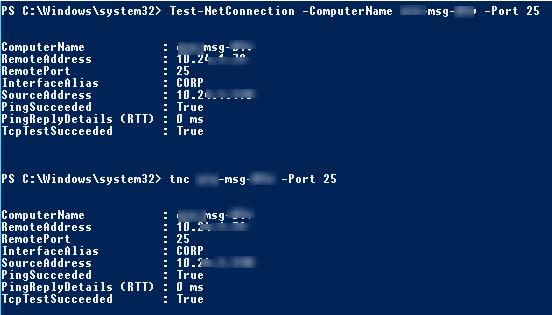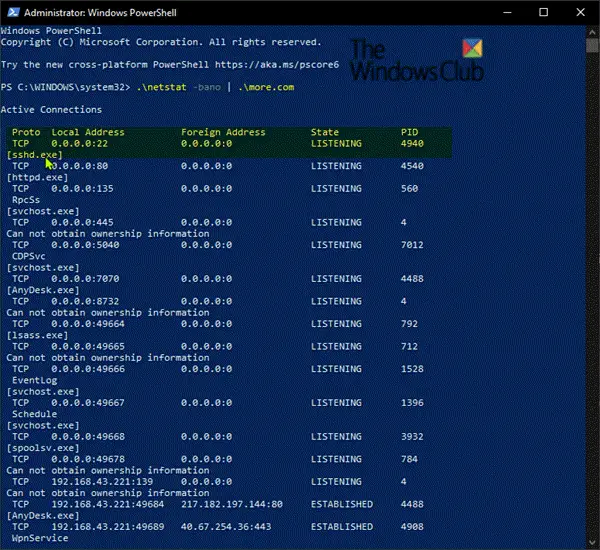

- #Ssh shell on windows 10 how to
- #Ssh shell on windows 10 install
- #Ssh shell on windows 10 update
- #Ssh shell on windows 10 upgrade
- #Ssh shell on windows 10 software
To do this, enter the following in a Bash session: ssh-copy-id username is your username on the remote machine and host is the IP address or host name of your remote machine. Now that we have an SSH key, it needs to be copied to a remote machine so that we can use it to authenticate instead of a password. The public key is in the file called id_rsa.pub and the private key in id_rsa. In Bash, your key will be saved to /home/\.ssh.īe sure not to change any files under %LOCALAPPDATA%\lxss in Windows or you risk corrupting your Linux system. Press enter to save the key in the default location and enter a passphrase for your key when prompted. Next run this command to generate an SSH key: ssh-keygen -t rsa Generate an SSH keyįirst open a command prompt and start a Bash session: bash It's most commonly used to securely connect to remote Unix like operating system. Secure Shell (SSH) is a protocol for secure remote login and other secure network services over an insecure network.
#Ssh shell on windows 10 install
Install the Windows 10 Anniversary if you don't already have it.
#Ssh shell on windows 10 software
This enables us to run Linux software such as SSH natively on Windows.
#Ssh shell on windows 10 update
The Windows 10 Anniversary update included a new beta feature - the Windows Subsystem for Linux. Unlike Windows, it’s best to specify whether you want an RSA key or something like Ed25519.Menu SSH to a Linux host from Windows 10 24 November 2016 on linux 0 Comments Open up Windows Terminal or the built-in Ubuntu command prompt (assuming you installed Ubuntu Linux). Why would you want to do this? If you primarily live in Linux for command line duties then it just makes sense to keep your keys in WSL. In fact, it’s basically the same as with the Command Prompt version. If you’re a WSL user, you can use a similar method with your WSL install. RELATED: How PowerShell Differs From the Windows Command Prompt Option 2: Generate Keys in WSL
#Ssh shell on windows 10 upgrade
When you upgrade to a new PC you need to move those keys with your other files or risk losing access to your servers and accounts, at least temporarily. Just remember that the more keys you have, the more keys you have to manage. You can do that as many times as you like. You’d follow the same process as above, but when it came time to save your key you’d just give it a different name such as “id_rsa_github” or something similar. Say, for example, you wanted to use the default keys we just generated for a server you have on Digital Ocean, and you wanted to create another set of keys for GitHub.

If you wanted to create multiple keys for different sites that’s easy too.
#Ssh shell on windows 10 how to
Note: If you can’t see your “.ssh” folder in File Explorer, check out our tutorial on how to show hidden files and folders in Windows. You will see you have two files in your “.ssh” folder: “id_rsa” with no file extension and “id_rsa.pub.” The latter is the key you upload to servers to authenticate while the former is the private key that you don’t share with others.

That’s it your keys are created, saved, and ready for use. If you really don’t want a passphrase then just hit Enter. If you’re worried about forgetting your password check out this round-up of the best password managers on Review Geek. We highly recommend you do this to keep your key secure. Next, you’ll be asked to enter a passphrase. If you use the defaults then it will save your keys in C:\User.ssh -assuming the C drive is where your user account is stored. If you’d like to use a different algorithm- GitHub recommends Ed25519, for example-then you’d type ssh-keygen -t ed25519.Īfter you type your command hit Enter, and then you’ll be prompted to give your key a name and save it in a specific location. In our tests on Windows 11, it created a 2048-bit RSA key. This will automatically generate the SSH keys. Whether you use Command Prompt or Windows Terminal, type ssh-keygen and hit Enter. It also has fun features like setting background images. It’s a tabbed program that can run the Command Prompt, PowerShell, and the Windows Subsystem for Linux all in one window. Tip: If you use the command line often, we’d highly recommend installing Windows Terminal from the Windows Store (installed on Windows 11 by default).

To use it open the Windows Command Prompt by hitting the Windows key and typing “cmd”.


 0 kommentar(er)
0 kommentar(er)
